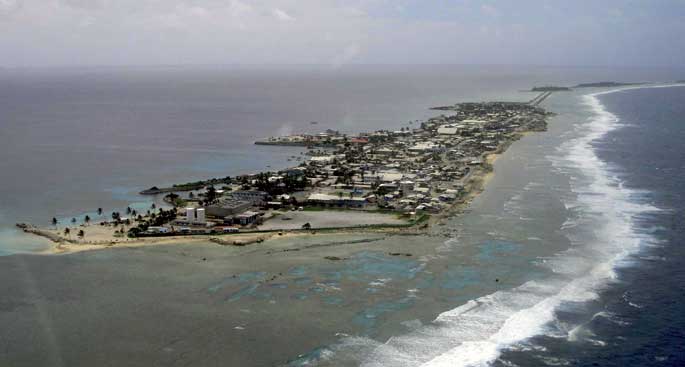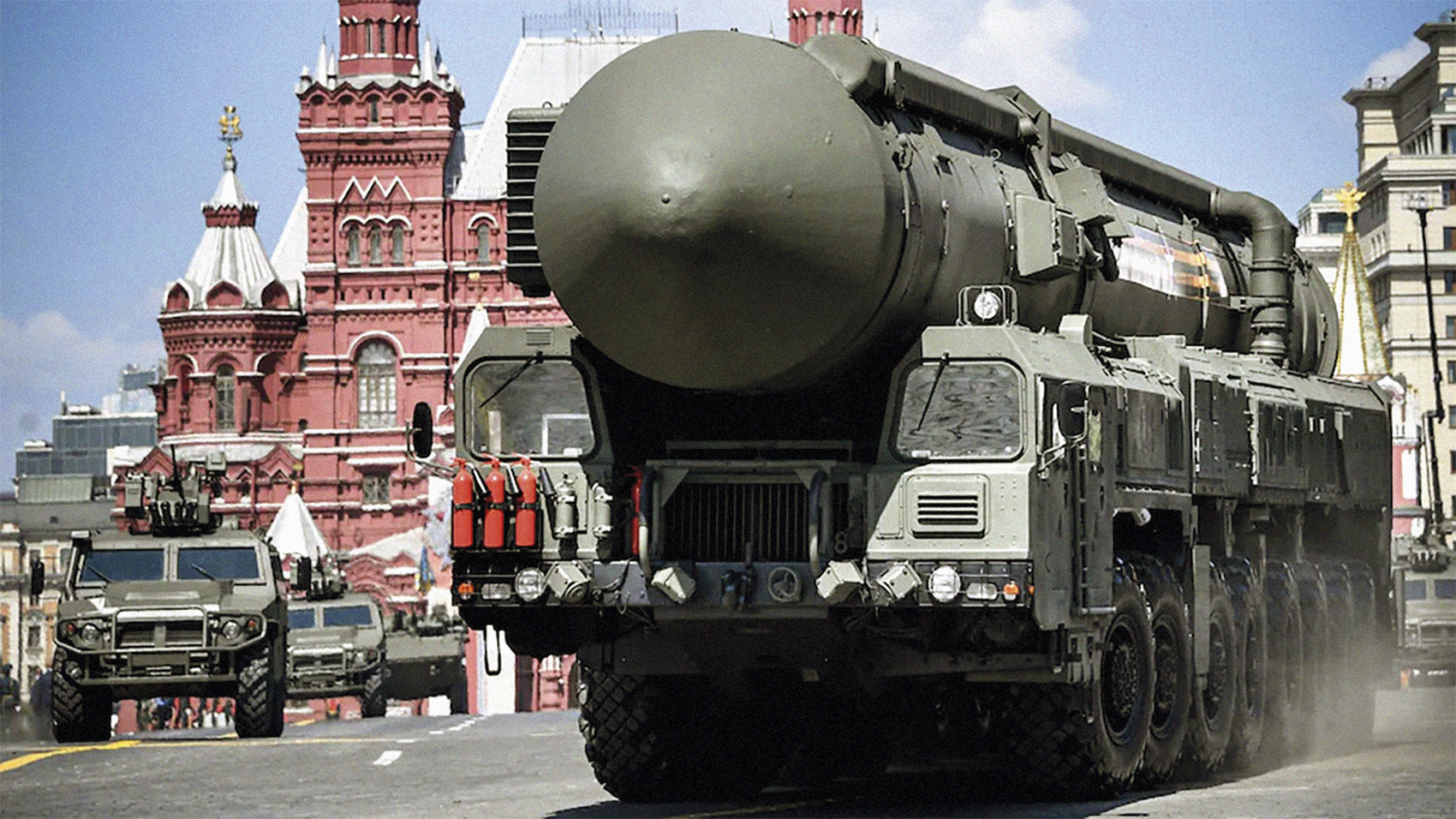The Marshall Islands calls for a ban on atomic bombs
- The meeting of the Pact for the Non-Proliferation of Atomic Weapons was held in New York, convened by the UN from 27 April to 22 May. The Marshall Islands again demanded that nuclear weapons be avoided, reminding the world of the hard price being paid by the inhabitants of this small country of Micronesia.

How many people in this room have seen with their own eyes the explosion of an atomic bomb?” asked Marshall Islands Foreign Minister Tony DeBrum. He would be the only one.
On the first day of March 1954, DeBrum was fishing with his grandfather at the age of nine near the Likiep Atoll. A sudden glow illuminated the dawn as the grandfather picked up the water network. Then they were shook by a strong stream of air. “Everything turned red,” DeBrum told New York congressmen, the sea, the fish, the sky and the grandfather’s net. That we were 200 miles from ground zero! It’s an unforgettable memory.”
His grandparents and grandchildren had seen the explosion of the Bravo atomic bomb in front of its ends. Between 1946 and 1958, in the open-air Marshall Islands, the United States exploded 67 more. Bikini and Eneweta exiled the atoll inhabitants for nuclear tests on their lands, and thousands of citizens of the neighboring islands suffered the damage of these tests, which were carried out without any kind of protection.
The terrible Bravo explosion, which the DeBrumd had seen 200 miles – 15 kilotons, 750 times the Hiroshiman – fell to 90 miles from the 23 Japanese steam fishermen Fukuryu Maru, as it was told in the chronicle “The Dragon of Happiness was killed with the Bikini Bomb” in Argia ten years ago.
Following the landing of the Fukuryu Maru seamen with calcined fish and contaminated fish, the Japanese were aware of the atomic tests and their consequences that the United States was carrying out in the Pacific. More than 400,000 Japanese participated in the protests that took place in the streets of Bilbao. The request for a ban on the exploitation of atomic bombs was signed by 30 million Japanese. In 1963, the ban on open-air atomic testing was adopted for countries possessing such weapons.
Today, the Marshall Islands have two open cases, one in the courts of the United States and one in the International Tribunal, against the United States, Great Britain, France, Russia and China, because they have not made any progress, one of the parties to the Treaty on the Non-Proliferation of Atomic Weapons (NPT).
A federal judge has immediately rejected the request of a court in the United States to annul its actions. That of the International Courts is moving forward. Between March 2013 and December 2014, three international congresses were held in Oslo, Mexico City and Vienna on the humanitarian effects of nuclear weapons and steps towards their prohibition.
But the atomic powers have also received these movements in a very cold and unworthy manner. They must be understood: they are engaged in very large investments to modernise their atomic arsenals, ensuring that in the coming years the risk of atomic war will not decrease, but will increase greatly.
Paradise rotting through the atom
BOB Álvarez has analyzed these accounts in the journal Bulletin of the Atomic Scientists: “The Marshall Islands and the NPT”. The scientist and professor Álvarez has worked for the U.S. administration, led in the 1990s the committees and teams for the control of atomic weapons, including one sent to North Korea, and when he writes about atoms he knows what it is about.
“Land-mines,” says Alvarez, are prohibited by an international treaty that causes too much damage, because they are indiscriminate and violate the humanitarian law of war. There is no doubt that atomic bombs are much more serious and indiscriminate in the injuries they cause. The Marshall Minister, DeBrum, demonstrates with a hard example that the very development of atomic weapons also violates the humanitarian bases and that they must therefore be banned.”
The Marshall Islands were taken away by the United States in 1944, with land to the local lords for ten dollars (sic!). purchased. The Yankee military began nuclear explosions in 1946 and did not interrupt them until 1958, leaving several islands destroyed and all neighbours contaminated. In 1968, a biological warfare experiment was carried out in the Enewetak atoll, where the dangerous bacterium Staphylococcus aureus was spread.
In these small islands of the Pacific, which are found in the imagination of the Westerners, parallel to paradise, the United States produced a series of explosions, called Castle. In the spring of 1954. The brand in the Castle series is that from March to May they released 48 kilometres of energy in explosions, including the famous Bravo, which has been designated by the US Radiochemical Society as “the worst radiological disaster suffered by the United States.
Ten minutes after the explosion, Bravo's mushroom was 62 miles in diameter. His contagion had gone much further. “Bravo spread Iodo into radioactive 30 times more than Fukushima and Chernobyl had pulled between them.”
The explosions have particularly affected several of the 24 atolls that make up the Republic of the Marshall Islands, official sources have reported. In particular, the people of the Rongelap, Alinginea, Rongerik and Utiri atolls, located about 200 miles from the area where Bravo was buried, received as much radioactivity as those who suffered the Hiroshima explosion.
The increase in radioactivity was felt on US territory following the nuclear explosions in the Castle section. In 1954 the authorities discovered, for example, that in the milk of the continent's cows there was as much radioactivity as the one described above with the explosions in the Nevada desert. If that was the case in the United States, what was not going to be in the Marshall Islands ...
Long after Alonso de Salazar, founded in the Commissions of Bizkaia, found him in 1526, the Marshall Islands have been an independent state united with the United States since 1986. The Ronald Reagan Ballistic Missile Defense Test Site is on the Kwajelein tow.
Despite the neglect of worlds, nuclear tests for the Marshall are not just memories of the past. They continue to pay a huge bill, emptying the Rongelap trailer, polluting the environment of the other islands, with serious diseases caused by radioactivity in their bodies.
The United States has not developed any strategy to eliminate pollution from these trailers, as it is believed that it would be expensive. On the contrary, on the island of Ebye, one of the most populous and dirty areas in the world, thousands of people are concentrated who have been evacuated from lands with too much radioactivity.
Arma nuklearren produkzioarekin, mantentze lanekin eta modernizazioarekin loturak dituzten hainbat enpresa aztertu dituzte, eta horien artean agertzen dira BBVA, Santander bankua eta SEPI.
Japan, 6 and 9 August 1945, the United States launched an atomic bomb causing tens of thousands of deaths in Hiroshima and Nagasaki; although there are no precise figures, the most cautious estimates indicate that at least 210,000 people died at the end of that year. But in... [+]
On the occasion of the Hiroshima G7, the temptation to say again what Marx has made us repeat too many times, putting us in the mouth of Hegel, is not a fool: “Hegel says that all the great events and characters in universal history appear twice, but he forgot to say: once as... [+]

























